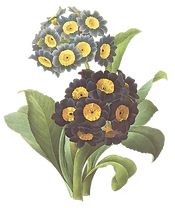You Get What You Weed
- Cynthia Thomas
- Aug 1, 2018
- 2 min read
The garden is a demanding friend. It’s a mirror, really, of how well you’re keeping up. The more your give, the more it shows. However, if like me you have had to split your time between two, well, she’s not going to sit idly by. Oh no, she’s going to find something else to fill her lonely spots.
Indeed, as Aristotle noted "Nature abhors a vacuum."
How and when and where all these uninvited weed seeds come to root in the yard is a mystery to me. On our recent return to Virginia, our front bed was inundated with a succulent-looking, multiple-branched, deep-rooted plant that grew in every bare crack; even the ones in the rock wall! They pulled out easily enough and literally filled a 42-gallon garbage can.

It got me thinking, the pepper and tomato plants languished in the summer heat yet this plant was flourishing. Curious, I looked it up and found that purslane has a long history of adaptation. In the class of plants known as xerophytes [ˈzirəˌfītes] purslane adjusts to low-moisture conditions like a cactus. And what I was calling a weed, other cultures prize for its culinary and medicinal uses.
In fact, Portulaca oleracea stems, leaves and flower buds are all edible. The plant has a slightly sour and salty taste and is eaten throughout much of Europe, the Middle East, Asia and Mexico. It can be eaten fresh, pickled, boiled and stir-fried. Incredibly, this little weed contains more omega-3 fatty acids than any other leafy vegetable! It also contains vitamins A, C, E, and dietary minerals such as magnesium, calcium, potassium, and iron.
When you go online you can find recipes for purslane pesto, yogurt dip, salad, tstaziki, quesedillas, you name it, you can find it. I tried a few of the leaves on my BLT (along with lettuce leaves) and it wasn’t bad at all. When you pick the plant in the morning, it has more of a sour taste due to oxalic

and malic acid. According to Wikipedia, malic acid (which is the souring principle of apples) is produced through the crassulacean acid metabolism (CAM) pathway that is seen in many xerophytes, and that tanginess is at its highest when the plant is harvested in the early morning.
While this is a beneficial weed, be careful not to confuse it with a flatter, similar plant called Hairy-Stemmed Spurge, which is poisonous. In addition to be lower-growing, spurge is distinguished by a milky sap, which can be seen if you squeeze the stem. Click here to see the difference.
And remember, voids were made to be filled; so while you can’t always get what you want, if you try some time, you just might find, you get what you weed ;) In this case, you get a healthy, low-maintenance, prolific plant with amazing survival skills and more omega-3 fatty acids than in some fish oils.
Why not try it?























Comments